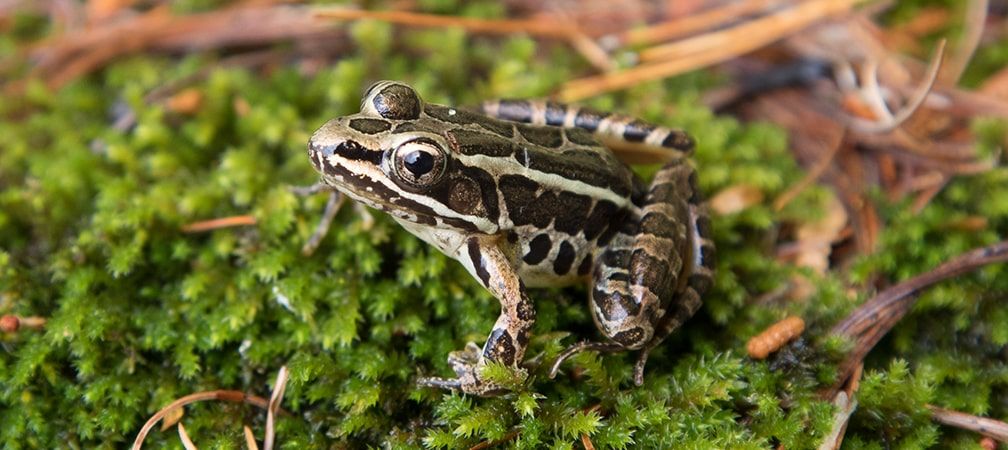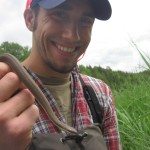Ontario Nature Blog
Receive email alerts about breaking conservation
and environmental news.
© Lora Denis
Queensnake © Joe Crowley
As an enthusiastic field biologist, I seldom pass up a chance to go exploring for unusual wildlife. So I was more than happy to assist the Nature Conservancy of Canada conduct surveys this summer for one of Ontario’s most rare, and most unique, snakes: the queen snake.
These small, harmless snakes live in rivers, streams, and lakes with natural shorelines and clean water. They are very picky eaters, consuming only molted crayfish. Unlike many sit-and-wait hunters, the snakes swim through their domain poking and prodding under rocks searching for the perfect dinner.
The day we set out, I understood that we were heading out for a relaxing week of searching for snakes on a beautiful, slow-moving river. What I didn’t realize was that flipping hundreds of rocks eight hours a day was exhausting.
Within a few hours, my hands were purple and numb from the cold water as I carefully flipped rocks and placed them back as we searched the elusive queen snake. Catherine, our intern, carefully checked the water close to shore and bravely reached into undercut banks looking for hiding snakes. Tanya, an NCC conservation biologist and our guide for the week, kept us moving as she timed our search and checked the shoreline. We spent well over an hour searching 100 metres of river.
But our day was not without its rewards. Beneath one rock was a young pickerel frog. These frogs are often confused with the much more common, northern leopard frog, and it was the first one I’d seen this year. After recording its location, I let the frog return to its rocky abode.

I also got the chance to practice my crayfish-catching skills. This was to help determine if queen snake populations were dependent on the species or number of crayfish present at a site. Ontario is home to nine different species of crayfish, you can download Ontario Nature’s field guide.
Our cold hands, backaches, and crayfish nips were not in vain. Over the course of four days of surveys, we found four snakes, including two juveniles the size of a pencil. The snakes were individually marked, measured, and released. Measuring queen snakes can be stressful because they are very sensitive to heat. Care is always taken to reduce how long we handle these reptiles, and they are periodically dipped in the cold stream so they don’t get overheated.
Ever wonder what a queen snake hunting looks like? Check out this video, narrated by David Attenborough from the series Life in Cold Blood.

Gananoque Lake Nature Reserve © Smera Sukumar
great publish, νery informative. I wondᥱr wһy thе opposite specialists оf this
sector don’t understand this. Ⲩou must proceed үour writing.
Ӏ’m sսre, you’ve a greаt readers’ base aⅼready!
Hey I am also a guy thats loves to be around reptiles and I was wondering if there was a certain group of people that protected reptiles and amphibians. I have saved countless endangered turtles and other reptiles. If you know something about a group of people like this email me at npaduchowski@hotmail.com
Hi Nick,
Thanks for giving endangered reptiles and amphibians a helping hand! A great program to get involved in and meet other enthusiastic reptile lovers is the Ontario Reptile and Amphibian Atlas that Ontario Nature coordinates. You can learn more at https://www.ontarionature.org/atlas and connect to many participants on our Facebook group “Ontario Reptile & Amphibian Atlas.”
Hi James –
It was great to have you and Catherine out for 4 days with us. Your help and dedication was really appreciated.
I hope your fingers have started to heal from all the rock flipping.
The Attenborough video of the Queensnake eating the crayfish was amazing! Thanks for the link. I know the Life in Cold Blood series, but I haven’t seen all the episodes. Nice to see local herps profiled by a such an internationally known wildlife expert.
Will